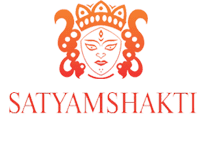Addressed as Raudra Brahman or Wild God in the Rig-veda, he transforms into the Saumya forms representing Sadguna related with Shiva as a teacher. This transformation of Raudra Brahman into Daksināmūrti as observed in the Rig-vedic hymns narrates that Manu had divided his property among his sons, but nothing was left for his youngest son, Nābhānedistha. Hence Manu advised his son to proceed to the sacrifice of the Angirasas and lead them to heaven by singing the mantras of the Raudra Brahman and receive their thousand cows in return. Just as Nābhānedistha was collecting the cattle, a large man from the north clothed in black, stopped him, saying, “this is mine; mine is what is left at the site.” On knowing the truth from his father that An۟girases did not have the power to dispose of the cattle, Nābhānedistha returned the cattle to the stranger who was Raudra Brahman himself. Pleased with Nābhānedistha, who spoke the truth, Rudra gifted the cattle back to him. This gift or Dakshina was the first ever given to an inspired seer and a prototype for every Dakshina or present given to a priest at the completion of a sacrifice. This image of Rudra as a giver of Dakshina came to be called as Dakshinamurty.

February 13, 2023 0Comments
